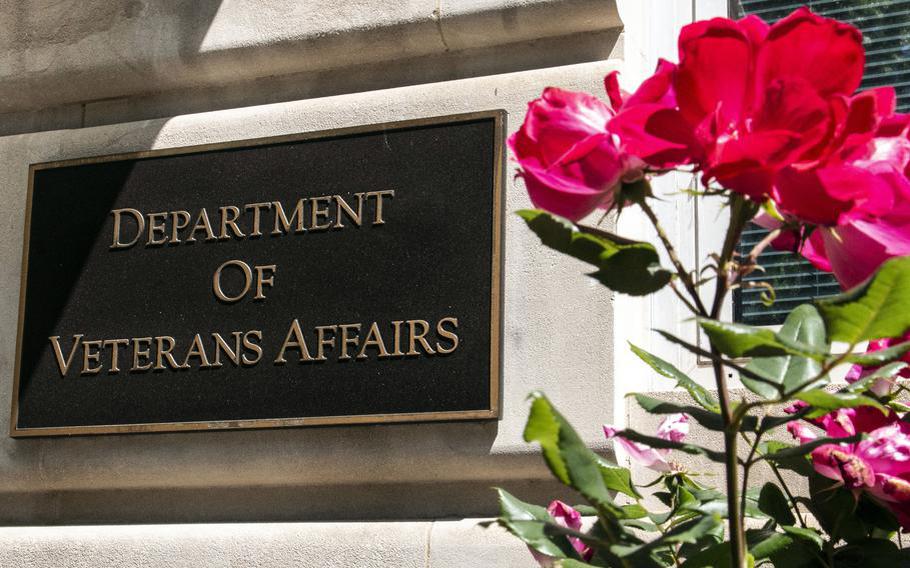
The national network of more than 150 state veterans homes would benefit from greater oversight from the Department of Veterans Affairs and follow-up checks to ensure compliance with annual VA inspections, a government watchdog agency said. (Stars and Stripes)
WASHINGTON — The national network of more than 150 state veterans homes would benefit from greater oversight from the Department of Veterans Affairs and follow-up checks to ensure compliance with annual VA inspections, a government watchdog agency said Tuesday.
The multiple layers of state and federal compliance reviews in place for state veterans homes — and their effectiveness — were examined at a hearing of the House Veterans’ Affairs Committee’s subpanel on health oversight, which included recommendations from the Government Accountability Office for improving compliance.
Reviews include inspections by the VA, the Centers for Medicare and Medicaid Services and many of the states where the homes are located.
Sharon Silas, director of health care at the Government Accountability Office, testified about a newly published GAO report on opportunities for the VA to improve oversight of state veterans homes.
The VA paid about $1.5 billion for care at state veterans homes in fiscal 2023. The agency offsets some costs for care for eligible veterans.
There are more than 30,000 beds at state veterans homes, accounting for half of the VA-supported, long-term care for veterans.
“We found that VA officials did not have a process for following up with state veterans homes about accepted corrective action plans, which are required for all deficiencies cited during a VA inspection,” Silas said.
State veterans homes care for an older population — 85 and older — compared to other nursing homes for veterans, according to the National Association of State Veterans Homes.
Rep. Mariannette Miller-Meeks, R-Iowa, chairwoman of the subcommittee, said there is an increasing demand on state veterans homes as more Vietnam War veterans require institutional care.
About 50% of veterans in the U.S. are 65 or older, according to the census. But the largest group of older veterans — 5.5 million — served during the Vietnam era.
The homes offer lower-cost care compared to the private sector, according to the state veterans homes association. The rate for skilled nursing care at a state veterans home is $262 a day compared to $424 in private sector nursing homes.
“It’s clear that the state home program provides significant value to VA in meeting their obligations to the men and women who served,” said Ed Harries, the association president.
To receive reimbursements from the VA, the homes must meet standards for quality of care, infection control and other areas, according to the GAO. Homes that fail to meet the standards can be cited for deficiencies.
The VA provides per diem payments and offers grants to homes for developing, remodeling and modifying veterans homes.
“Studies and statistics continue to indicate that state veterans homes, on average, are safer, have higher quality ratings, and receive fewer substantiated complaints and citations compared to community nursing homes,” Harries said.
Miller-Meeks asked whether state veterans homes could benefit from construction grants to develop on-site adult day care facilities.
Harries said he sees the need for adult day care. Under a medical model, with skilled nurses on staff, adult day care could offer daily assessments of residents and remove the isolation that can lead to depression and suicide among elderly veterans, he said.
Rep. Julia Brownley, D-Calif., asked how significant Medicaid cuts considered by President Donald Trump’s administration would affect operations at state veterans homes. House Republicans discussed a plan to scale-back federal funds for Medicaid in a closed-door meeting late Monday, Politico reported.
“That could have a big impact on us,” Harries said, adding about 75% of residents at state veterans homes receive assistance from the Centers for Medicare and Medicaid Services, which is a joint federal and state program providing health coverage for the elderly as well as for low-income individuals, families and certain groups.
The GAO report also recommended the VA strengthen oversight of the nursing homes to ensure standards for quality are met.
The VA contracts with private vendors to handle annual inspections. The VA also conducts “for-cause” inspections after a complaint about a facility is made or the facility itself files a report.
The Centers for Medicare and Medicaid Services, which also conducts its own inspections, has a range of penalties for noncompliance, according to the GAO report. These include fines levied for each day of noncompliance with standards, denial of payment for newly admitted veterans, mandated staff training and on-site monitoring.
The VA can opt to withhold per diem payments to state veterans homes with serious problems, according to the GAO.
But “having a range of enforcement actions could help VA tailor its enforcement for the scope and severity of deficiencies identified,” Silas said.